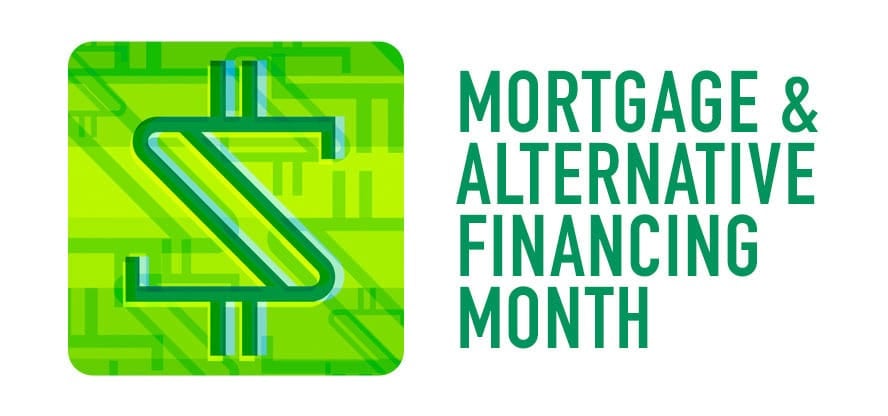All June long we’re going deeper on mortgage and title — looking at where the mortgage market is headed, how products are evolving and alternative financing options changing the game. Join us for Mortgage and Alternative Financing Month. And subscribe to Inman’s Extra Credit for weekly updates all year long.
Would you like to pay off your mortgage up to 18 years sooner than the 30 years on your current loan? Would you like to avoid refinancing in the future but still access your equity by simply writing a check? An “all-in-one-mortgage” combines a bank account, a mortgage and an equity line of credit (the equivalent of a HELOC) into a single product that accomplishes each of these goals.
Have you ever heard of an “all-in-one mortgage? I certainly hadn’t until about three weeks ago when my husband introduced me to Craig Yenni, a money mentor for the Money Multiplier Team.
In today’s video, Yenni teams up with his AIO mortgage specialist John Haney, the president of the Colorado Mortgage Company. Together they explain how AIO mortgages differ from traditional 30-year fixed fully amortized loans. In addition, they also share how they are using AIOs to access the equity in their primary residences to make various types of real estate investments.
How AIO mortgages work
According to Haney, an AIO mortgage (sometimes called an “offset” mortgage) has been used in other countries for over 40 years but has only been available in the U.S. since 2007.
- An AIO mortgage differs from the 30-year fixed-rate mortgage by combining banking and borrowing together into a single account. In other words, your mortgage account also has checking, debit card, and wire transfer services tied to that account. To access the equity in your home, you merely write a check — no refinancing, no title or escrow fees, and best of all, no waiting.
- The big secret for making this system work is that the money you now deposit into your checking or savings account to pay expenses goes into your AIO Mortgage account instead.
For example, for someone who is receiving W-2 income and takes home $7,000 per month, they would deposit their paycheck into their AIO bank account and then make their mortgage payment, car payment, and pay all other expenses the same way they currently do from their checking or savings account. Any amount left over goes directly to reducing the principal on the AIO.
- What makes AIO mortgages different from the traditional 30-year fully amortized mortgage is that when a borrower takes out a fully amortized fixed-rate loan, the amount of interest the borrower pays is predetermined on day one. The reason it takes so long to pay off fully amortized loans is that the lenders not only get their up-front points and fees for originating the loan, but they also collect between 50 percent to 60 percent of the total amount of interest due during the first 10 years the borrower owns the home.
- In contrast, AIO mortgages are often called “principal first loans.” Every time you make a deposit, it goes to paying down the principal first before the simple daily interest on your loan is calculated. In other words, the amount of money you channel through AIO reduces (“offsets”) the interest you pay.
According to Haney:
The average person using this loan product will completely pay off their mortgage in approximately 12 years without changing any of their financial habits. The only change is where they park their money each month.
In an AIO mortgage, the rate matters less that most types of financing, because of how quickly the loan is paid off. Their interest savings can sometimes be hundreds of thousands of dollars on their loan, due to how the interest is calculated and the payments are made.
How much will you save by paying your loan off in 12 years rather than 30 years?
On a $300,000 loan amount at an interest rate of 5.147 percent (most recent 30-year fixed rate fully amortized mortgage), you would pay $289,509 in interest over the life of the loan.
If you paid off that loan in June of 2034 with an AIO rather than in June of 2052 with an amortized loan, you would save at least $123,391. But here’s the kicker — because the AIO mortgage reduces the principal first and is interest-only, those savings are much greater than $123,391.
AIO financing facts
AIOs have stricter underwriting requirements. Here’s what you need to know:
- AIOs are a type of Adjustable-Rate Mortgage (ARM) where the interest rate is calculated daily. A popular option is a 30-year loan, with the first five years at a fixed rate, and then a variable rate after that. Some lenders may loan as much as $2 million to $3 million using an AIO.
- The interest rate on AIOs is currently tied to the one-year U.S. Treasury rate and runs about 50 to 75 basis points higher than a fully amortized loan (currently about 5.7 percent).
- AIOs are underwritten like any other mortgage including an origination fee, underwriting fee, title work and an appraisal. The loan-to-value ratio cannot exceed 80 percent of the appraised value and borrowers need a minimum credit score of 700 to qualify.
- The minimum monthly payment is the amount of interest due each month. On a $300,000 loan at 5.7 percent, the minimum monthly payment would be approximately $1,425 per month.
- AIOs are portfolio loans, i.e., a loan that is issued directly to the borrower rather than being sold on the secondary market. In other words, the lender keeps this loan on their own books.
Never refinance, ever again
If you do need money for an emergency, if you want to redo your kitchen, or use your equity to help fund your children’s college education, you can access it simply by writing a check — no waiting, no refinance and no second mortgage required.
Yenni points out how this impacts the borrower over the life of the loan.
On average, most people are selling or refinancing their homes every seven to eight years. The result is that the borrower begins a new amortization schedule that forces them to pay new loan origination fees as well as starting to pay back 50 percent to 60 percent of interest the lender collects during the first ten years of the loan. This system makes it very difficult for homeowners to get in front of their mortgage.
This is especially true when a homeowner needs to access their equity because they’re facing an illness or some other type of emergency. With AIOs in contrast:
When you make deposits and drive your principal down, in essence, your AIO also acts like a savings account where you can park your money instead of leaving it in a regular savings account where you might be earning 0.8 percent if you’re lucky. Your money is parked against your mortgage, which saves you interest (i.e. 5.7 percent based upon today’s AIO rates) but is also still completely liquid.
Disadvantages of AIO mortgages
The two primary disadvantages of an AIO mortgage are:
- Lack of discipline: Overspending is a serious temptation since the AIO mortgage makes accessing your equity as easy as writing a check.
- Higher interest rates and the potential for negative amortization: Most lenders have higher interest rates on all-in-one mortgages. There is no principal reduction requirement until 120 months have passed. The line of credit then begins reducing over the next 10 years. There can be negative amortization up to the 80 percent credit limit.
Resources for obtaining an AIO mortgage
Some lenders who offer AIOs include All in One Mortgage Lenders, American Financing, CMG Financial, Colorado Mortgage Company, California-based Direct Finance US, and Merchants Bank of Indiana. You can also search online to locate lenders that make AIOs in your state.
A case study on how to use an AIO mortgage for real estate investing
Yenni described how he has used the AIO mortgage on his home to invest in real estate. Before he invests, he always asks these important questions:
- How do I ensure that I don’t pay more money out of my personal funds than I need to whether it’s taxes, fees, or interest paid?
- What is the opportunity cost of my money sitting there (in the equity of my primary residence) doing nothing?
- How can I get a better return from borrowing from my AIO mortgage?
- How can I have the greatest degree of control over my finances?
Yenni goes on to explain:
With the AIO Mortgage, I really have the ultimate flexibility of paying back my AIO, taking money out of the system or depositing money back into the system. I use my AIO to feed the different aspects of my banking functions, but also for private lending.
For example, I’m part of a group where lenders and borrowers come together to do real estate deals. I have used part of the equity [in my primary residence] to get into first lien positions on real estate deals that last from 12 to 18 months. I’m making far more than I would elsewhere.
For example, I have a wide variety of opportunities that I’m in currently that are 12 percent, some at 15 percent, and others at 18 percent. What matters most is the size of the spread between your AIO rate and your investment.
Another type of opportunity are developers who need funding to do the site work for new projects that typically include streets and utilities. Once the site work is completed, the developer then sells the lots to a builder. At that point, my principal is returned, and I can deposit the funds back into my AIO.
Another type of investment I’m involved in is revamping mobile home parks where they go in, clean up the mobile home park, and get the units rented.
I also work with some individual lot builders that find lots in different cities, build a house on that lot, and return the money once they sell.
Haney uses a slightly different approach.
I’ve been using this product to fund my investments in single family rental market. As my cash flow comes through my AIO, it drives my principal balance down much faster. I can then access my equity, which I use as a continuous funding source to acquire more real estate. And then we just rinse and repeat.
The best part about this product is that you’re in the driver’s seat, you can decide where your money’s going, and how you’re going to pay the interest. Regardless of what you’re investing in, being in the driver’s seat is a good place to be.
Some of my clients have been very aggressive about parking cash in their AIO because they don’t have to be worried about liquidity when emergencies come up.
A word of warning, however:
It’s important not to look at this tool as an ATM against your home. You need to be disciplined about using it for wealth building as opposed to taking vacations or [indulging in] luxuries.
Help Mom keep her home
If you have older friends and relatives, here’s another creative way to use an AIO. There’s nothing sadder than seeing someone forced out of their home because they can no longer afford to live there.
While those over the age of 62 could take out a reverse mortgage that has no payments, it’s still very expensive because the borrower or their estate must pay the principal and interest created by this negative amortization loan. In many cases, the paying back principal payments along with the amortized rate of interest can wipe out much of the homeowners’ equity.
On the other hand, if Mom needs an extra $10,000 per year to stay in her home, at an interest-only rate of 5.7 percent, that’s only $540 per year in interest plus whatever the fees were to fund the loan during the first year. If the interest payments are kept current, her estate will be charged an additional $10,000 per year when she dies, but the bulk of her estate will remain intact.
Haney’s final takeaway is:
Because I use this product myself, I can tell you being in the driver’s seat and having maximum liquidity is one of the best positions to be in. Since the money you’re borrowing is your equity, it’s tax-free. Instead of having no liquidity like you do in a 30-year fully amortized loan, you have maximum liquidity. The AIO is a tool that is unmatched in the marketplace.
Bernice Ross, president and CEO of BrokerageUP and RealEstateCoach.com, is a national speaker, author and trainer with more than 1,000 published articles. Learn about her broker/manager training programs designed for women, by women, at BrokerageUp.com and her new agent sales training at RealEstateCoach.com/newagent.














